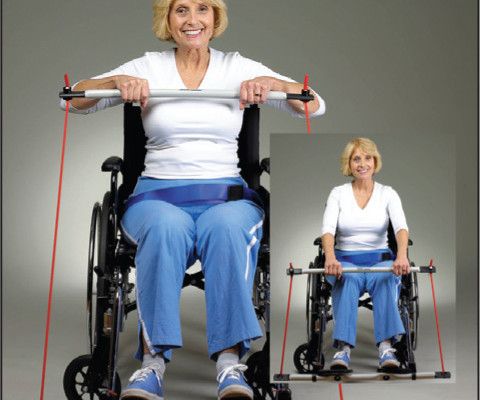Physical activity and exercise are essential for maintaining good health and overall well-being. However, individuals with physical disabilities often face challenges when trying to participate in traditional workouts. The good news is that adaptive workouts are designed specifically to cater to the needs of people with physical disabilities. These workouts provide an inclusive approach to fitness, allowing everyone to enjoy the benefits of exercise regardless of their physical limitations.
Understanding Adaptive Workouts
Adaptive workouts involve modifying exercises and equipment to accommodate individuals with physical disabilities. These workouts are tailored to meet the unique needs and abilities of each person, ensuring they can participate and engage in physical activity safely and effectively. By implementing adaptive strategies, individuals with physical disabilities can improve strength, flexibility, cardiovascular endurance, and overall fitness levels.
Adaptive Equipment
One of the key components of adaptive workouts is the use of specialized equipment. There is a wide range of adaptive equipment available, including but not limited to:
Wheelchair-accessible exercise machines
Adaptive weights and resistance bands
Handcycles and other cardio machines
Adaptive seats and supports for stability
These assistive devices facilitate safe and effective workouts, allowing individuals with physical disabilities to target specific muscle groups, increase strength, and improve overall fitness.
Adaptive Exercises
Adaptive workouts offer a wide range of exercises that can be tailored to individual needs. Some popular adaptive exercises include:
Seated exercises: Seated workouts are suitable for individuals with limited mobility or balance issues. These exercises can target various muscle groups and include activities like seated leg presses, chest presses, and shoulder raises.
Water-based exercises: Aquatic workouts are ideal for people with physical disabilities as water provides buoyancy and reduces the impact on joints. Water-based exercises include swimming laps, water aerobics, and resistance training using aquatic equipment.
Modified yoga and stretching: Yoga and stretching exercises can be adapted to accommodate individuals with physical disabilities. There are modified poses and techniques that focus on improving flexibility and relaxation.
Adaptive sports: Adaptive sports such as wheelchair basketball, seated volleyball, and hand cycling provide not only physical exercise but also an opportunity for social interaction and competitive engagement.
It is crucial to consult with a qualified physical therapist or adaptive fitness instructor to identify the most suitable exercises and modifications based on individual capabilities and limitations.
Inclusive Fitness Facilities
Creating inclusive fitness facilities is essential to ensure individuals with physical disabilities have access to adaptive workouts. Gyms and fitness centers should aim to provide:
Wheelchair-accessible entrances, paths, and parking spaces.
Adaptive exercise machines and equipment.
Clear signage and instructions for adaptive exercises.
Trained and knowledgeable staff who can assist with adaptations and modifications.
Inclusive fitness classes and programs that cater to different disabilities.
By making fitness facilities inclusive, people with physical disabilities can feel welcomed, empowered, and supported in achieving their health and fitness goals.
Benefits of Adaptive Workouts
Engaging in adaptive workouts provides numerous benefits for individuals with physical disabilities:
Improved cardiovascular health
Increased muscular strength and endurance
Better joint mobility and flexibility
Enhanced mood and mental well-being
Weight management and improved body composition
Reduced risk of chronic diseases
Increased independence and functional abilities
These benefits contribute to an overall improved quality of life and increased self-confidence.
Conclusion
Adaptive workouts play a crucial role in promoting inclusivity in the fitness world. By providing opportunities for individuals with physical disabilities to engage in safe and effective workouts, we can ensure that no one is left behind when it comes to reaping the benefits of exercise. Whether it’s through modified exercises, adaptive equipment, or inclusive fitness facilities, the goal is to make fitness accessible to everyone, regardless of their physical limitations. So let’s embrace adaptive workouts and create a more inclusive fitness industry for all.
